
Flip and Go poker tournament
Experience the Thrill with Flip & Go
Why wait for the excitement when you can jump straight into it? Flip & Go is the blazing-fast tournament format that cuts out the slow early stages and takes you directly to the heart of the action. No more sitting through the grind—just pure adrenaline and nonstop play from the very first hand.
Flip&Go Steps
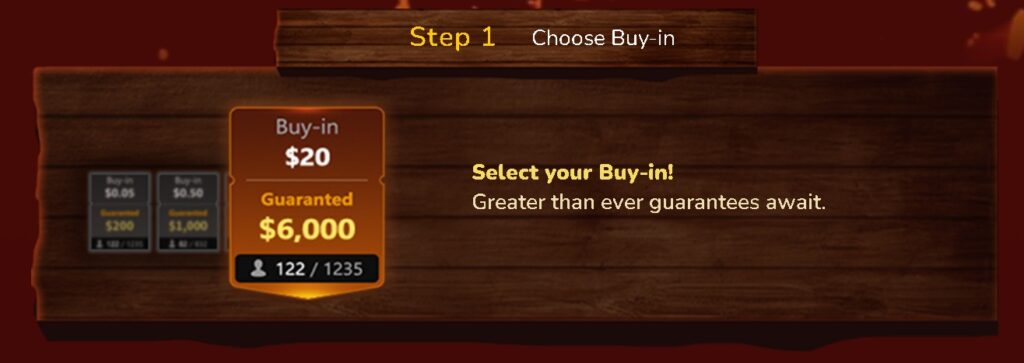
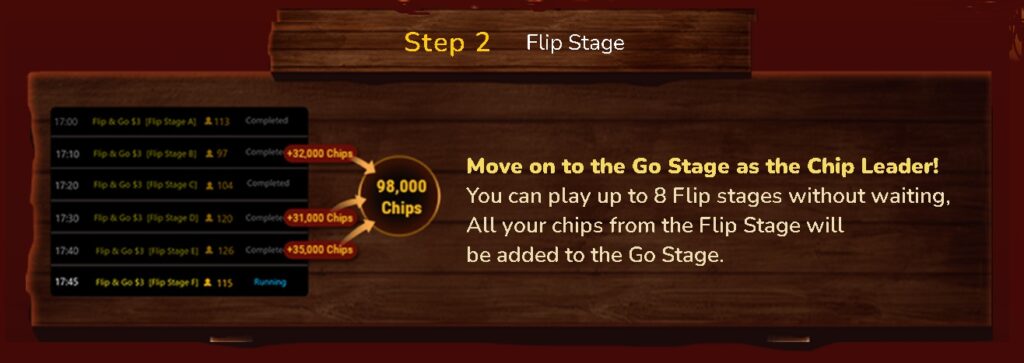
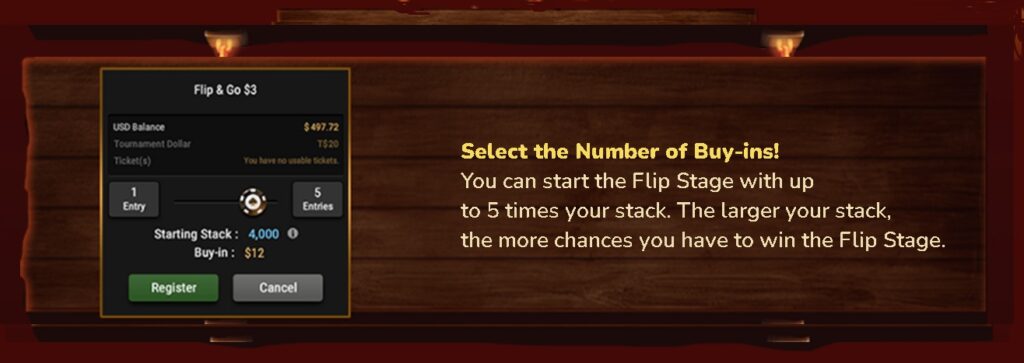
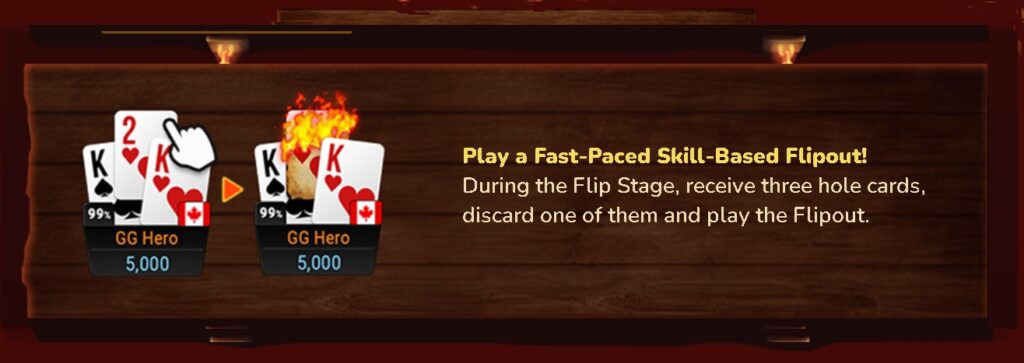
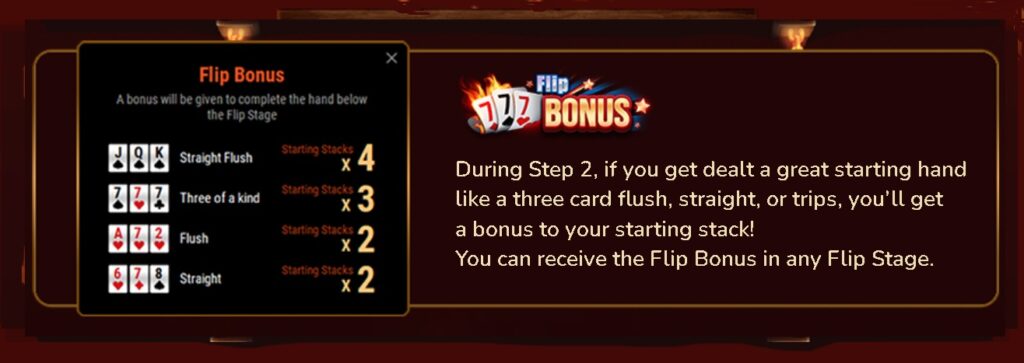
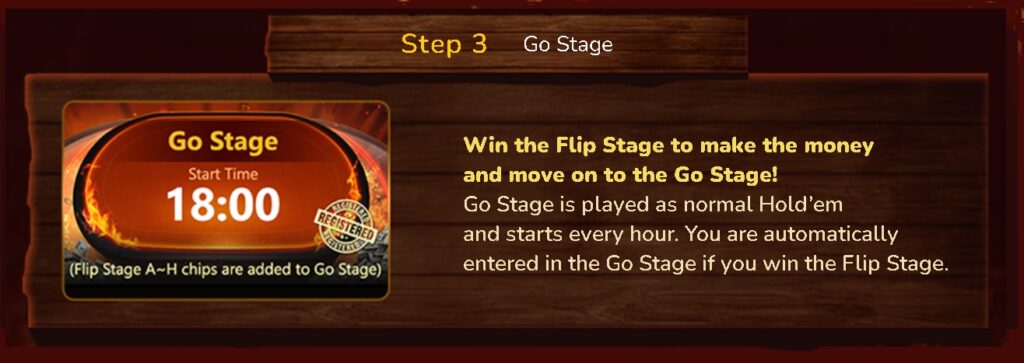
Flip and Go Poker Tournament – Rules, Tips and Why It’s Worth Trying
Poker keeps evolving all the time. Every few years there’s some new format that catches fire, and right now one of the hottest is the Flip and Go poker tournament. It’s not just a small twist on Hold’em — it’s a proper shake-up of how tournaments start and play out. If you ever felt bored sitting through the slow early levels of a tournament, this format was basically made for you.
In this article I’ll break down how Flip and Go works, the rules, some strategy advice (yes, there is strategy even in the flip part), and why more and more players are giving it a shot.
What Actually Is a Flip and Go Poker Tournament?
In simple terms, it’s a poker tournament split into two stages:
The Flip – Right at the start, everyone at the table is forced all-in. You get dealt your cards, the board runs out, and one player at the table moves on. No slow play, no endless folding, just straight to business.
The Go – The winners of those flips all combine into a normal tournament. Blinds go up like usual, players bust, and in the end there’s one champion.
So the idea is you skip all the dragging early levels where everyone plays super tight. You either win the flip and get right into the money, or you don’t and that’s that.
Why Do Players Like Flip and Go So Much?
A few reasons stand out straight away:
It’s fast. No two-hour grind just to min-cash.
It’s fun. There’s instant adrenaline when you’re all-in first hand.
It’s cheap to try. Buy-ins are often on the lower side, but prize pools can still be decent.
It’s friendly to casual players. People who don’t have time for 8-hour sessions can still enjoy a full tournament experience.
And honestly, it just feels fresh. Even grinders who play thousands of hands a week like mixing it in, because it’s a break from the usual grind.
The Rules of Flip and Go
The structure isn’t complicated. Here’s how it plays:
Everyone pays the buy-in, just like in any other tournament.
On the very first hand, all players go all-in (the “flip” part).
Whoever wins that pot at each table gets through to the second phase.
The second phase (“go”) plays like a regular freezeout. Blinds go up, stacks get short, and eventually one player takes the whole thing down.
Depending on the site, there are sometimes little twists (like being dealt three hands and picking one), but the core idea stays the same: quick flips at the start, normal poker afterwards.
Can You Actually Use Strategy in the Flip?
At first it looks like total luck, right? But in some formats you do get to make a choice. For example, if you get several starting hands and can choose which one to play, then picking suited connectors, high pairs, or ace-high suited hands makes a difference.
But yeah, if it’s just pure one-hand all-in, then variance rules. The “strategy” is more about bankroll management and playing enough volume to balance out the swings.
Strategy in the “Go” Stage
Now once you survive the flip, the real game starts. Here’s where skill matters:
Adjust to your stack. Some players will have built bigger stacks in their flips, others will be short. Don’t play one-size-fits-all.
Remember you’re already in the money. That changes risk vs reward. It’s not about just cashing, it’s about building a stack to win.
Position is still king. Being on the button or in late position gives you a huge edge, especially against weaker opponents.
Play solid vs recreational players. Lots of people play Flip and Go just for fun. Don’t overcomplicate hands against them.
Basically, treat it like a normal tournament once you’re through.
Mistakes to Avoid in Flip and Go
Here are the traps players fall into again and again:
Thinking it’s “all luck.” The flip is, but the second stage rewards real skill.
Playing outside their bankroll. Variance is high, so you need discipline.
Carrying the flip mindset into the Go stage. You’re not supposed to jam every hand once you’re past the flips.
Forgetting payout structures. Since you’re already in the money, climbing up the pay ladder matters.
Flip and Go vs Regular Tournaments
So how does this format compare to your classic multi-table tournament?
Time: Flip and Go is much shorter. Great if you don’t have a whole evening.
Variance: Higher at the start, but similar later on.
Player pool: More casual players, which is good news if you play solidly.
Excitement factor: Instant action vs the slow burn of traditional poker.
Neither format is “better” — it’s more about what mood you’re in.
Why You Should Try Flip and Go
If you like action, this is the tournament for you. It’s fast, it’s fun, and you can win a nice payout without sitting at your desk all night. It’s also a nice way to practice short-stacked play, since a lot of situations in the Go stage involve push/fold decisions.
Even if you’re more of a serious grinder, sprinkling some Flip and Go poker tournaments into your schedule can be +EV, since weaker players flock to them for the fun.
Final Thoughts
The Flip and Go poker tournament is one of those rare formats that really changes the pace of the game. You skip the boring levels, get the thrill of an all-in right away, and then still have plenty of room for skill in the later stages.
Yes, the variance can sting, but if you manage your bankroll and stay disciplined in the Go stage, it can be both profitable and a lot of fun.
If you’ve never tried one, it’s worth giving it a shot. Who knows — you might find it’s your new favorite format.